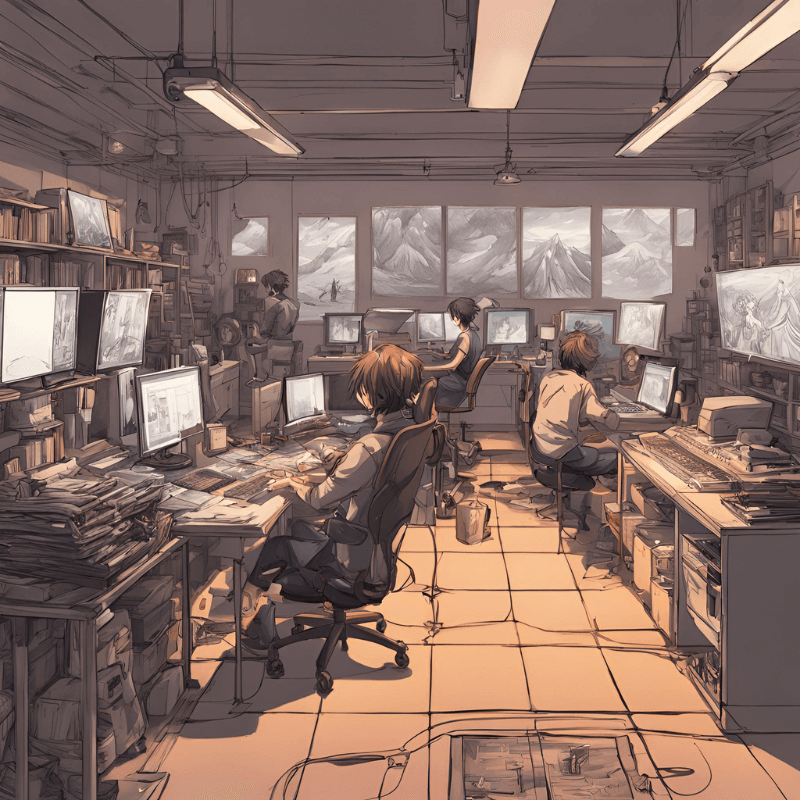
The Making of an Anime Series: From Concept to Screen
Share
Anime has evolved into a complex and dynamic art form that captivates audiences worldwide. This article will take you on an in-depth journey through the intricate process of creating an anime series, from initial concept to the final product on screen. We will explore the roles of various team members, the technical aspects of animation, and how fan feedback can influence production. Furthermore, we will discuss how international streaming platforms are reshaping the landscape of anime production and distribution.
1. Concept Development
Every anime series begins with a concept, an idea that lays the foundation for the entire project. This stage involves brainstorming sessions among writers, directors, and producers. They consider various aspects, such as the target audience, genre, and themes they want to explore.
For instance, a fantasy anime might focus on a hero's journey, while a slice-of-life series could center around everyday experiences. The team may create a pitch document that outlines the premise, character descriptions, and potential episode arcs.
2. Storyboarding
Once the concept is solidified, the next step is storyboarding. This process involves creating a visual representation of the script, breaking it down scene by scene. Storyboards are crucial as they help the director visualize the pacing, composition, and flow of the series.
Storyboard artists sketch out key frames, illustrating character movements and camera angles. This stage is where the team determines how each episode will progress, ensuring that the story maintains coherence and engages the audience.
3. Character Design
Character design is another critical aspect of anime production. Character designers work to create visually appealing and distinctive characters that resonate with viewers. This process often involves multiple iterations, where designers refine features like facial expressions, clothing, and overall aesthetics.
The design of characters is influenced by the series' genre. For example, in a shōnen anime, characters may have exaggerated features and dynamic poses, while in a josei series, the designs may lean towards realism, reflecting adult life and relationships.

4. Scriptwriting
While character designs take shape, scriptwriters craft the dialogue and plot points that will bring the storyboard to life. A well-written script is essential for capturing the essence of the story and maintaining audience engagement.
Writers focus on creating compelling dialogue that reflects each character’s personality and motivations. They also ensure that the pacing of the plot is appropriate, balancing action sequences with emotional moments.
5. Voice Acting
Voice acting is a pivotal element of anime production, bringing characters to life through vocal performances. Casting directors hold auditions to find the right voice actors, or seiyū, who can convey the personality and emotions of their characters effectively.
Once cast, voice actors record their lines in a sound studio, often in collaboration with the director to ensure their performances align with the vision for the series. This process may involve multiple takes to capture the perfect delivery, especially for emotionally charged scenes.
6. Animation Production
With the voice tracks in place, the animation process can commence. This stage is divided into several steps, including layout, animation, and post-production.
- Layout: Layout artists create detailed backgrounds and establish camera angles, ensuring that each scene has the right visual context.

- Animation: Animators then bring characters to life by drawing each frame, a labor-intensive task that requires precision and creativity. Depending on the style, animation can be done traditionally by hand or digitally using software.
- Post-Production: After the animation is complete, post-production begins. This involves editing, adding special effects, and incorporating the music score and sound effects.
Animation studios such as Studio Ghibli and MAPPA are known for their distinct styles and meticulous attention to detail, contributing to the overall quality of the series.
7. Music and Sound Design
Music plays a vital role in enhancing the storytelling experience in anime. Composers like Yoko Kanno and Hiroyuki Sawano create memorable soundtracks that complement the emotional tone of each scene.
The sound design team also works on creating sound effects that enrich the atmosphere, from the rustle of leaves to the clashing of swords. The combination of music and sound design elevates the viewer's experience, making scenes more impactful and engaging.
8. Fan Feedback and Iteration
In the digital age, fan feedback can significantly impact anime production. Studios may gauge audience reactions through social media platforms, forums, and streaming services. Positive responses can lead to additional seasons, while negative feedback may prompt changes in character arcs or storylines.
This interactive dynamic between creators and fans allows for a unique evolution of anime series, as studios strive to meet audience expectations while maintaining their artistic vision.
9. Distribution and Streaming
The rise of international streaming platforms has transformed how anime is distributed globally. Services like Crunchyroll, Funimation, and Netflix have made it easier for viewers to access a vast array of anime series.
These platforms often collaborate with studios to promote new releases, increasing exposure for both the series and the creators. Moreover, global streaming has led to increased investment in high-quality animation and diverse storytelling, reflecting the growing popularity of anime worldwide.
Conclusion
Creating an anime series is a multifaceted process that involves collaboration among talented individuals across various disciplines. From concept development and storyboarding to animation and voice acting, each stage is crucial in bringing the story to life.
As anime continues to evolve and gain international acclaim, the impact of fan feedback and streaming platforms will likely shape the future of anime production. By understanding the intricacies of anime creation, viewers can appreciate the artistry and dedication that goes into each series, deepening their connection to this beloved medium.
🎁 Exclusive for blog readers
Use code BLOG10 and get 10% OFF your favorite anime-inspired items.
Explore All Collections